 | ||||||||||||||||||
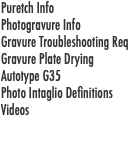 | 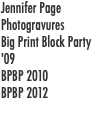 |  | ||||||||||||||||
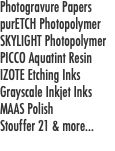 |  |  |  | |||||||||||||||
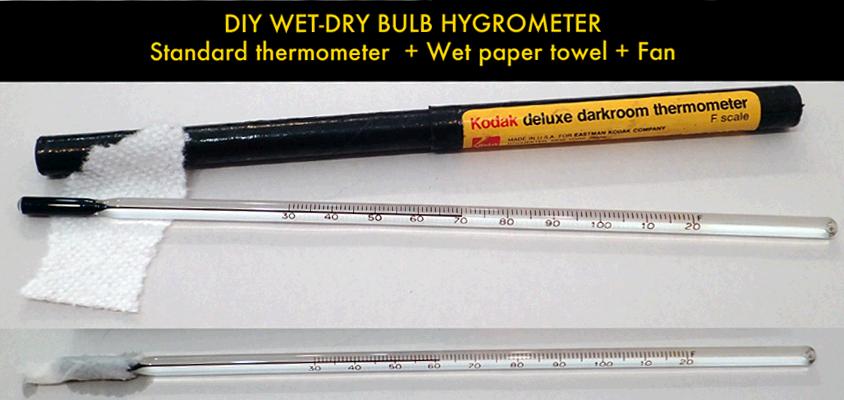 | ||
Wet-Dry Bulb Hygrometer for Measuring Relative Humidity for Photogravure August 15, 2016 Ideal humidity is crucial for photogravure. Excessively high or low relative humidty can cause all kinds of problems in the process. It will be doubly frustrating and difficult to solve problems if your hygrometer is inaccurate. Dial and digital hygrometers can often give wrong readings by quite a lot! Just buy more than one brand and compare them side by side, they will rarely read the same. It is important to have a reliable way to check the relative humidity of your gravure studio and the wet-dry hygrometer is the simplest and most accurate method for measuring RH. These are also known as a sling pychrometer and a Mason's hygrometer. If you don't have one all you need is a glass lab thermometer. Use a spirit or mercury lab thermometer to check the room temperature. Next, wrap the bulb of the thermometer with a small piece of paper towel or insert it into a small piece of cotton shoe string. Wet the 'wick' with room temperature water. Place the wet thermometer in front of a fan and note the temperature once it has stopped falling. This will take a few minutes. The amount of moisture in the air will cause faster or slower evaporation of the wick and a temperature differential. Faster evaporation will cause the temperature of the wick to drop proportionally lower indicating less relative humidity. When the temperatures are almost the same with little to no evaporation then the RH is almost 100%. Subtract the wet bulb temperature from the dry bulb temperature to determine the depression amount. Locate the dry bulb temperature on the left column of the table along with the corresponding wet bulb depression. The number at the junction is the percent of relative humidity. Use this method to verify and/or calibrate your other hygrometers. Cape Fear Press ©2016-2021 | ||||||||
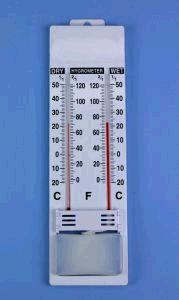 | ||||||||
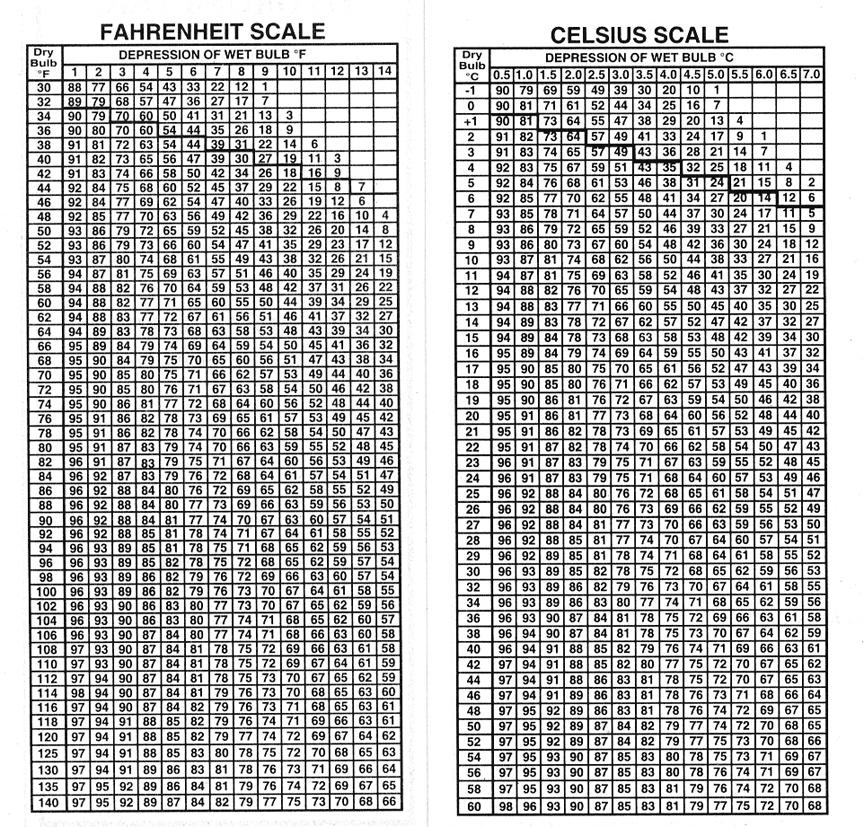 | ||||||||